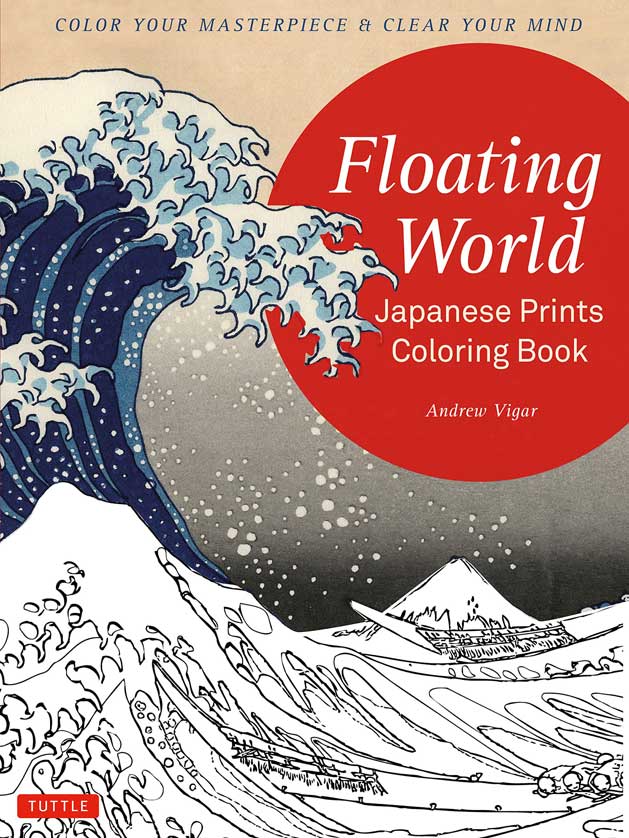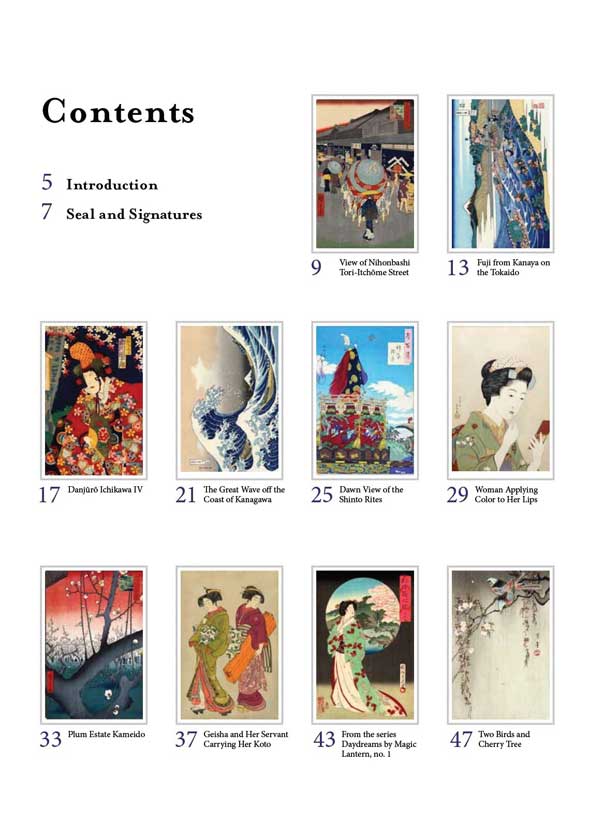Floating World Japanese Prints Coloring Book: Color your Masterpiece & Clear Your Mind
Floating World Japanese Prints Coloring Book
by Andrew Vigar
Tuttle Publishing (2016)
ISBN: 978-4805313947
Paperback, 96 pp
Adult coloring books? Are those some kind of modern-day shunga?
Nope. Adult coloring books are a big thing these days, letting children of yesteryear relive their childhoods, relax frayed nerves, show their artistic side or just plain revel in nostalgia.
For Japanophiles, quite possibly the best choice of adult coloring books is Andrew Vigar's Floating World, which consists of copies of 22 Japanese wood block prints, all dating between 1777 and 1930. More than 90% of readers of one book review site rate this book at four or five stars.
The pictures to color are all from the ukiyo-e (literally "pictures of the floating world") genre, and readers will recognize some of them for sure. The most famous print to color, Katsushika Hokusai's "The Great Wave off Kanagawa," is also on the cover of the book. ABC Television news has called the picture, "possibly the most reproduced image in the history of all art."
But, if you don't care about the history of Japanese wood block prints, you can simply grab your pens or pencils and just start coloring. Some say that the paper is not thick enough for sharpie-based markers, but that seems to not be a consensus opinion. In any case, color pencils will work every time.
Prints include geisha, kabuki actors, flora and fauna, and beautiful scenes/landscapes. Mt. Fuji and cherry blossoms? Of course. The book is 9 x 12 inches (22.9 x 30.5 cm), with some parts of most pictures being very detailed. You can color in great swaths at once, or you can color in fine detail.
After the short opening of two pages of the history and background of wood block prints and ukiyo-e, and two pages of a somewhat-interesting history of the seals on the prints, the book is split into four-page sections.
The first, right-facing pages have 2-5 paragraphs on the artist and/or the history of the print, including the date. The next two pages are the print on the left side and your soon-to-be magnum opus on the right. The fourth pages are blank, save for the name of the previous artwork with the artist's name and year of completion in small letters at the bottom of the page.
Of course, there is no need to copy the original colors. Color in "The Great Wave" as all red, or even chartreuse if you want. There are no art teachers around to give you a low score or unwanted suggestions.
When you are done, leave your masterpieces in the book, or tear them out using the perforations on each page that you've colored.
Hokusai, who is said to have influenced painters such as Vincent Van Gogh, Claude Monet and Claude DeBussy, has three pictures represented in the book, but Utagawa Hiroshige has the most, with seven. Most of these may be familiar to you, especially "Suijin and Massaki on the Sumida River." Two of Hokusai's contributions come from his famous series entitled, "Thirty-Six Views of Mount Fuji."
Review by Marshall Hughes.
Buy this book from Amazon USA | UK | Japan
Looking to buy Japanese art directly from Japan? GoodsFromJapan is here to help.
More Japan Book Reviews
Japanese Kokeshi Dolls: The Woodcraft and Culture of Japan's Iconic Wooden Dolls
Japanese Dolls: The Fascinating World of Ningyo
All About Japan - Stories, Songs, Crafts & Games For Kids
Black Ships Illustrated Japanese History
Satsuma Rebellion - Illustrated Japanese History
Tokyo Outdoors: 45 Walks Hikes & Cycling Routes
© GoodsFromJapan.com




No comments:
Post a Comment